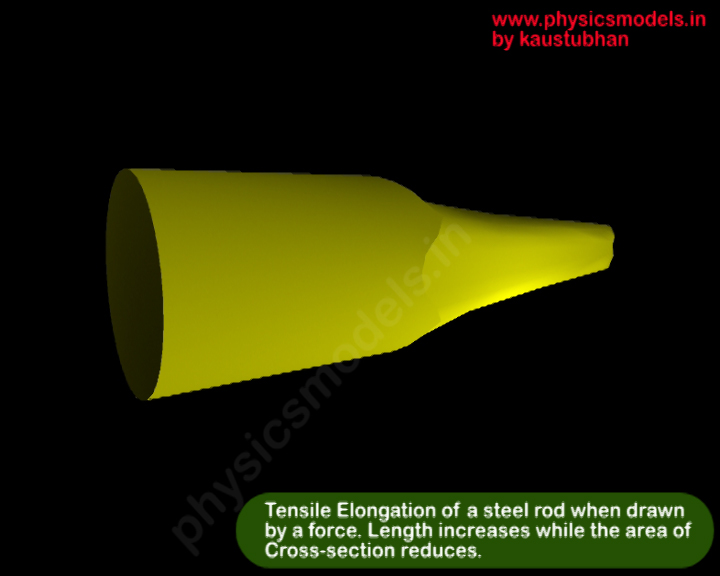Elasticity – an introduction
The word “Elastic” is something most people understand best by making an analogy to a rubber band or strap, which rebounds to its original shape after getting stretched. The doubt arises for a beginning student – do metals also behave like an elastic band? Are they elastic? The answer is : Yes, to an extent. The amount of extension may be small, the force required to elongate a metal wire or bar may be huge, but in the end, the metal wire/bar will come back to its original shape. (provided the elongation is within a limit ) . That meets the elasticity criterion.
If a metal is deformed beyond a particular stage, it would remain deformed and won’t bounce back to its original shape. This behaviour (story) can be explained by a graph of Stress versus Strain.
Video and Animation : we take an example of a metal bar, round cross-section, and we put some stress on it to make it longer, and see how it comes back to its original length. The word deformation is commonly used, for anything that has changed in length , or shape from its original starting point. In particular, for a deformation in length/width direction, the word “tensile” is used , such as ” Tensile Elongation ” , “Tensile Stress” etc….
Image of a permanent deformation:- The image below shows a cylinder (round cross-section) that has been permanently deformed by a large force, this cannot go back now to its original shape. We say this has gone beyond its elastic limit.

Area of cross-section: This is important to note since the force of elngation is acting all the time on this cross-section. Force / area is pressure, and in elasticity, it’s called “stress”. Like in above image , the area of cross-section of a metal bar or rod may reduce and become thinner when elongated beyond a point . But for small elongations, like in animation shown , the area of cross-section can be considered to be constant. This also makes it convenient to calculate stress, which would otherwise become difficult to calculate if suppose the area as also changing at the same time !
Also, the proportionality of Force and elongation holds only for a small range, upto elastic limit. Hence, for Hooke’s Law and applying Young’s Modulus, the Law states an assumption that “provided the deformation is small“.
